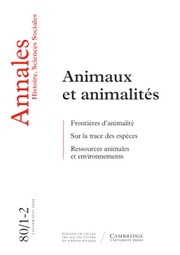Article contents
La mort de Muirchertach, fils d'Erc. Texte irlandais du très Haut Moyen Age : la femme, le saint et le roi
Published online by Cambridge University Press: 26 July 2017
Extract
Les Annales n'ont pas l'habitude de publier des textes. Nous avons fait une exception pour La mort de Muirchertach, fils d'Erc. D'abord parce que le commentaire bref mais dense du grand celtisant Christian J. Guyonvarc'h donne les principales clefs pour sa lecture et en montre la richesse. A cause aussi de l'intérêt qu ‘il présente pour quelques grands thèmes dont plusieurs ont fait dans les Annales l'objet d'articles qui constituent des enquêtes à suivre. Ainsi l'histoire de la christianisation des mondes païens, des processus par lesquels le christianisme combat, oblitère et reprend, baptisé, le vieux fonds païen, histoire des rapports entre culture ecclésiastique et mythologie païenne, une mythologie en train de subir la première phase de sa longue dégradation en folklore.
Summary
The archaic account of the death of Muirchertach mac Erca is one of the most eloquent testimonies in Irish mythology and pseudo-history to the ambiguous and obscure relationship between declining paganism and triumphant Christianity. Composed in keeping with the oldest techniques of Celtic oral narrative—explanatory sections in prose alternating with long passages in verse that constitute the heart of the story—this text, following a very long process of transmission by manuscript, presents three symbolic characters : the saint, who embodies all the intransigence of Celtic Christianity, the king of Tara, Senile and worn out by the exercise of power, who suffers a triple sacrifical death he is killed by his enemies, burned alive in a fire in his palace and drowned in a vat of wine or beer, the woman of the afterworld, transformed into a creature of temptation and Sin. The plot is evangelical in its simplicity: the woman uses magic to tempt the king, who succumbs and meets a tragic death, the saint, not without difficulty, is ultimately victorious and, as a sign of his total triumph, sends everyone to Paradise.
- Type
- Les Domaines de L'Histoire
- Information
- Copyright
- Copyright © Les Éditions de l’EHESS 1983
- 1
- Cited by


